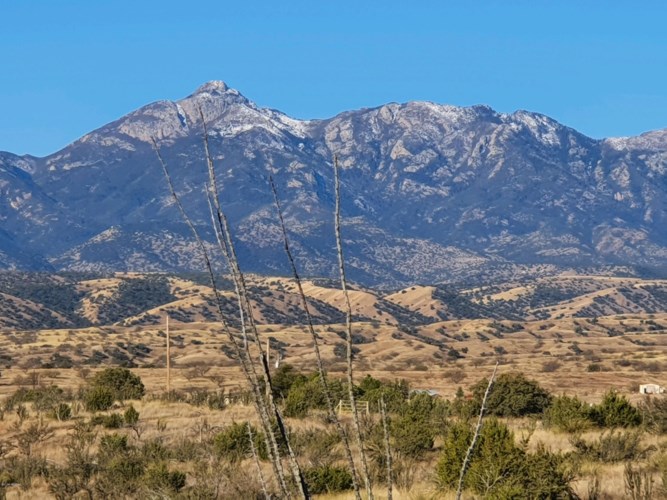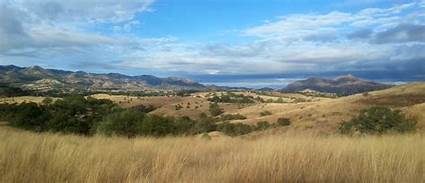I am not one to usually write about personal anecdotes but it seems this is the season for it. As of late I have been following the news about jaguar sightings in the area of Southern Arizona where I once used to live. Two males were sighted regularly over the last two decades (only males have been seen and it is assumed that is because they are younger cats pushed out of established territories in Sonora, Mexico by older males), but both were killed–one after a failed radio collar trapping attempt in Arizona and the other by ranchers in Mexico (where they are not protected, unlike in the US).
This is very bad news because not only were jaguars driven to extinction in the US by the 1960s, their former habitat in Southeast Arizona is now threatened by the proposed development of a huge open pit copper mine just miles from my former place of residence. To add insult to injury, Trump’s wall project, if completed, would impose an impassable physical barrier across the cat’s northern range and migratory and territorial paths for hundreds of other animals like ocelots, bears and puma. Since large cats need hundreds of square miles in which to roam, the mine and wall would be a disaster for their re-establishment in the northernmost part of their natural range.
With that in mind I commented on a forum dedicated to jaguars in Arizona and thought that I would share it here.
In the early 1990s I was living in Adobe Canyon on the Southeast flank of the Santa Rita mountains. Adobe Canyon is connected to the East via plateau (mesa) to Hog Canyon. At the north end of Adobe Canyon, near where it converges with Hog Canyon, are two well-known water landmarks: El Pilar and Bathtub tanks (the former a natural rock formation with underground streams forming pools at its base and the latter the product of a New Deal-era conservation project that dammed streams for cattle grazing). I spent much time in that wilderness, which was full of wildlife, including black bear, puma, bobcat, foxes, coyote, assorted snakes and lizards, hundreds of birds and numerous other creatures. It was a marvellous place to observe these animals.
Adobe Canyon is what is known as a box canyon because one side ends in a wall rather than being open on both sides (it was about ten miles in length from entrance to the wall at El Pilar). On the other side of the wall was Hog Canyon, which was longer and opened-ended on both sides. My place occupied 50 acres on what is known as high desert grassland and scrub bordering on the desert island oak and cottonwood foothills of the Santa Rita Mountains (pictured below). A seasonal (winter and monsoon flooding) stream ran through the property near the house and neighbouring ranchers ran cattle on it by agreement when needed. It got snow in winter because it was located about 5500 feet above sea level.

In 1992 I was sitting at my dining room table looking out on the meadow across the wash (dry stream bed) from my house when I saw a very large black cat come out of the tree line. Simultaneously, my Labrador started whining and shuffled off behind the sofa. I had seen puma and bear a few times before, including in that meadow, and this creature was neither of those.
What I was looking at was a melanistic jaguar, about twice the size of a puma. I jumped up and called the local Fish and Game ranger who lived in Hog Canyon. He rode over the ridge on his horse and was able to spot the jaguar as it left my property over another ridge line. We agreed that it was too big to a black puma (of which there were no records) and certainly was not a bear. I assumed that he would report the sighting, as we felt then that it was the first sighting of a jaguar in AZ in many years. However I wonder if he ever did so because of the politics involved between conservationists, ranchers, politicians, mining firms and developers. What I can attest to is the fact that there was at least one jaguar in the Santa Ritas in the early 1990s, and he was not of the spotted variety like the two males observed in the 2000s.

As it turns out I relocated soon thereafter to Washington DC to take up a job in the Defense Department, so never had the chance to follow up on that sighting. Nor have I seen mention of the black cat since I left that neck of the woods. I have been back to visit a few times over the years and Adobe Canyon is pretty much the same although the nearest towns are growing and gentrifying and there are a few new houses in the canyon itself. The old hands on Sonoita working ranches are being replaced by vineyards, wineries and tech entrepreneurs on lifestyle properties with great views. Perhaps that will work in the jaguar’s favour, since vintners and tech moguls are not invested in livestock as an income stream even if they keep a few around for tax and lifestyle purposes.
Anyway, all of this seems very far away and long ago from my current position on the west side of the Waitakere ranges. No big cats here other than feral moggies looking to get shot or trapped, and a lot more ocean on the horizon rather than Sky Island mountain ranges spanning 360 degrees from my roof top. And much, much more rain.
